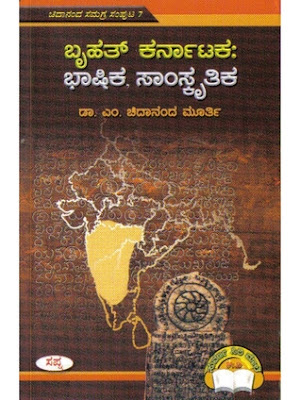Title: Grasta
Author: Karanam Pavan Prasad
Publishers: Concave Media & Publishers
Genre: Metaphysics/Philosophy/General Fiction
Pages: 143 (Paperback)
Source: Personal Copy
Hindu philosophy also known as “Darshanikas” in Sanskrit reveals us a great deal of information on
life, birth, death, love, sex, family, personalities, etc… and, there is
Quantum Physics that explores the vast and bounds of universe with relevant
experiments and theories. A book that combines the ideas of these two in a
story is an attempt that requires a great study in those subjects. At least
enough homework should be done before even attempting such a feat.
Karanam Pavan Prasad, a promising and talented young
writer bridges that gap by writing some marvelous stories that even the young
generation are much in awe of his talents. Grasta,
this is his 3rd novel. He has surpassed his reader’s expectation by
writing an extraordinary novel. This book combines the ideas of Metaphysics,
Philosophy, Darshanikas, Quantum Physics, and Electricity etc… But, we
definitely cannot term this as a science novel; neither can we term this as a
philosophical novel too. This book stands in between. The thin line of separation
from Science and Philosophy is what makes this book as a class apart.
The book is gripping from the very first page of the
novel. The gamut of emotions expressed by each and every character is a treat
to read from the book. The book takes us in a journey of two generations. The
main protagonist of the novel is Avinash, an Electronic scholar, more than that
a truth seeker. He is a common man by his birth, individual by his attitude and
scholar in his own accord. He is engrossed in social, scientific, philosophical
and personal aspects of his life. He is kind of a person who doesn’t get
excited by the happiness and doesn’t feel a sense of remorse when something bad
happens.
This book shows us the life in reality. Life, as in
reality is not what we have seen in movies or read in some romantic novels.
Life is full of struggles, yet we love the way we live and make the best out of
our abilities. The protagonist in this novel expresses his concern, his
ambitions, his future plan and how it became the otherwise. Avinash didn’t hail
from an affluent family. His family background is one of the hearts wrenching
stuff you read from this novel. Growing up in a family where death seems to be
easier option that to survive. His parents didn’t had the best life because of
the inter caste marriage.
As we read further into the book, we will get to read
the tale of Avinash who rose from the ashes. He has built himself an identity
by the help of good people that didn’t let him go astray. Now that he has a
steady career but to enjoy his success, his parents are not alive. That’s kind
of another struggle. Throughout the book we will realize, life is not what we aspired
to be, instead life is what happens when you’re busy in making plans for it.
Rekha is another protagonist or I can say antagonist
to some extent, enters the life of Avinash in the most unexpected way. This particular
event makes Avinash question the life in many perspective, the reason being,
should be read from the novel, and I am not going to include it in the review. Cheated
by her boyfriend and her impotent husband drew Rekha towards Avinash. But her dubious
plans remain intact till the end. Once we will realize what kind of woman is
Rekha, we will sure feel pity for Avinash. He has done no fault, but still he
agrees to the demand of Rekha and starts to live with her. Their relationship
is one of a kind. He became her husband without marrying her. Became father to
her child without even realizing. That’s where the novel hits like a storm. What
is life? What are relationships? What are life goals? Is family is just a
social agreement? Does every faults of a person become zero when living under a
family? What is birth? What is death? What is the reason for man’s survival? These
are the questions that haunts even after finishing the novel.
Though Avinash had a successful career as an
Electronic Scholar, a PhD to his name, and big fat bank balance, he missed
something deeply even any kind of relationship wouldn’t fulfill. He longed for
the answers beyond the realm of life and death. He tried to find those things
in his electronic experiments. He longed to build a system that provides
electricity to the instruments without being wired. This is somewhat related to
the Nikola Tesla’s futuristic ideas. But deep within, Avinash wasn’t satisfied
with his life. He was cheated by his own people. The one person whom he
respected throughout his life, at last, cheated him and brought him to a family
circle which he legitimately didn’t belong to. All these events made Avinash
become more and more introvert and in the end he just stopped looking for
answers and took life as it came to him with open hands.
Overall, I feel these kinds of novel needs more
traction from the audience. A serious readers like me, would definitely like to
see such author reaching new heights. The author has every capability to make a
mark in the literature world. His research and the stronghold on the subject have
made this novel as an epic read. I would highly recommend this novel to be read
by each and every one. The caption of the book put me in a thinking mode, “Birth
is not important; the result of the birth is”.
My Rating:
5/5

